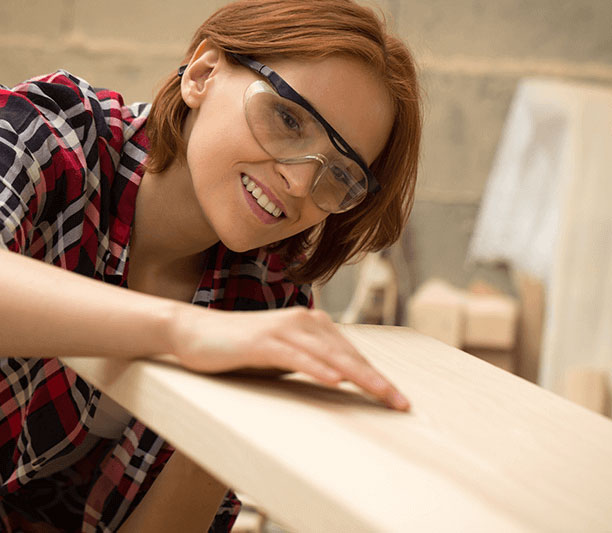
Ensuring worker safety is critical in the fast-paced environment of manufacturing, where efficiency and accuracy are critical. There are several hazards to workers’ health and safety in manufacturing settings, from dangerous materials to large machinery. The adoption of innovative safety eyewear equipment stands out among the many other safety measures used as a significant change, offering workers on the manufacturing floor unparalleled safety and peace of mind.
Recognizing the Hazards
Before exploring the revolutionary potential of safety eyewear, it is imperative to understand the inherent risks that factory workers encounter daily. Potential risks range widely and are constantly present, from falling objects and chemical exposure to hazardous radiation and harsh glare. These dangers, which can range from minor discomfort to long-term loss of vision, can cause major eye injuries if proper protection is not worn.
The Evolution of Safety Glasses
Over time, safety eyewear has experienced a remarkable transformation in dealing with these issues. The simple goggles and shields of the past have given way to a sophisticated range of protective eyewear solutions that use state-of-the-art technology to improve comfort and safety.
Materials Resistant to Impacts
Impact-resistant substances like polycarbonate, which provide outstanding toughness and shielding against projectiles with high velocities, are commonly used in the construction of contemporary safety eyewear. Because these materials are designed to withstand impact, there is a lower chance of eye damage from flying debris or unintentional impacts.
Advanced Technology for Lenses
The creation of new lens technologies is one of the major developments in safety eyewear technology. Anti-fog coatings keep lenses from fogging in moist or temperature-changing conditions, preserving sharp vision. Anti-scratch coatings guarantee durability and clarity. Tinted lenses are also perfect for outdoor work locations because they block damaging UV rays and glare.
Features of Ergonomic Design
Maintaining conformity to protective glasses guidelines requires comfort. To guarantee a snug and comfortable fit during extended use, ergonomic elements like adjustable nose pads, padded temple tips, and slim frames are incorporated into the design of modern safety glasses. Through the reduction of pressure points and improvement of fit, these design components improve wearer comfort and promote regular use of safety glasses.
Prescription Choices
Prescription safety glasses provide a custom fit without sacrificing protection for those who need vision correction. For those with different visual demands, these glasses are offered in a broad variety of strengths and kinds of lenses, guaranteeing maximum vision clarity and safety.
Comfort and Fit Can Be Adjusted
A key component in the acceptance and regular usage of protective eyewear is comfort. In response, manufacturers have created safety glasses with movable components like nose pads and flexible temples to guarantee a snug fit for a variety of face shapes and sizes.
Customized Tints and Coatings
Technological developments in finishing and tinting have improved the performance of safety eyewear even further. Anti-reflective coatings lessen glare, and specialty tints can enhance contrast and sharpness of vision in particular lighting scenarios, facilitating easier and safer environment navigation for workers.
The Advantages for Workers in Manufacturing
Using cutting-edge safety eyewear technology has several advantages for manufacturing employees.
Enhanced Defense: Modern materials and design elements offer unmatched defense against a variety of workplace dangers, lowering the possibility of eye injuries and guaranteeing worker safety.
Increased Comfort: Long-term adherence to safety procedures is encouraged and discomfort during prolonged work hours is reduced thanks to ergonomic design features and configurable options that improve wearer comfort.
Improved Productivity: Safety glasses technology helps sustain productivity levels and minimizes delays associated with workplace mishaps by protecting workers’ vision and lowering the chance of injuries.
Peace of Mind: With the newest safety eyewear technology at their service, employees can concentrate on their work with assurance and no worries about discomfort or any eye damage.
The Function of Safety Glasses Programs
There are several advantages to having a thorough safety eyewear program designed with construction workers’ requirements in mind.
Safety Against Injuries: By shielding employees’ eyes from flying objects, dust, and other hazards, protective eyewear with impact lenses lowers the incidence of traumatic eye injuries sustained at work.
Chemical Splash Protection: To protect workers’ eyes from hazardous materials, safety goggles with airtight frames and indirect venting act as a defense against chemicals and fumes.
UV Protection: By protecting workers from the harmful effects of UV radiation, safety eyewear with UV-protection coating reduces their risk of developing eye conditions like macular damage, cataracts, and photokeratitis.
Lessened Eye Strain: During both indoor and outdoor construction tasks, safety eyewear with tinted lenses and anti-glare coatings reduces strong light and glare, improving visibility and lessening eye strain.
Compliance and Accountability: Establishing a prescription safety glasses program promotes adherence to safety and health legislation and holds both employers and employees responsible for using appropriate eye protection techniques. It also strengthens the safety culture within the manufacturing sector.
Customization and Fit: Safety glasses, flexible frames, and styles made for comfort are just a few of the possibilities available through safety eyewear programs to meet the needs of individual workers.
Eyewebsafety provides prescription-compatible safety eyewear that is lightweight, reasonably priced, and suitable for use on construction sites.
Conclusion
The importance of safety glasses technology cannot be emphasized in the fast-paced world of production, where worker safety is of utmost importance. Today’s manufacturing workers can operate safely and effectively because modern safety eyewear offers them the shielding they need thanks to new materials, innovations in design, and lens technologies. Safety eyewear has even more promise in the future as technology develops further, keeping employees safe and protected from ever-changing workplace threats.





